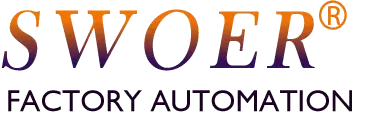“Riveting Machine” is a broad term that typically refers to the following main types, each with its specific focus:
- Blind Rivet Guns – For One-Sided Riveting
- Popis: Uses pull-through (pop) rivets. Operation is from one side of the workpiece. The mandrel is pulled, causing the rivet body to expand and clamp the materials.
- Primary Uses:
- Creating joints where access to the back of the workpiece is impossible (e.g., closed sections).
- Widely used in sheet metal (enclosures, cabinets), automotive, aerospacea appliance assembly.
- Ideal for joining dissimilar materials.
- Compression Riveters – For High-Quality, High-Strength Riveting
- Popis: Uses solid rivets. A massive, static pressure is applied to plastically deform (upset) the rivet tail, forming a second head.
- Primary Uses:
- Applications requiring exceptional structural strength a reliability, such as steel bridges, buildings, ships, heavy machinerya aircraft fuselages.
- Produces high-quality, robust joints that withstand high strength and fatigue loads.
- Orbital Riveters / Spin Forming Machines – For Precision and Special Riveting
- Popis: A rotating peen applies pressure and rolls around the center, causing the rivet tail to deform plastically and uniformly.
- Primary Uses:
- Precision instruments, automotive parts (e.g., brake pads), door/window hardware, jewelry, etc.
- Suitable for hollow rivets, solid rivets, and peening shafts into housings.
- The process is smooth and controlled, resulting in excellent surface finish.
- Impact Riveters – For Traditional Riveting
- Popis: Uses a pneumatic or hydraulic impact force to upset the rivet tail in a single blow. This is the most traditional method.
- Primary Uses:
- Common in construction sites a maintenance/repair for large metal structures.
- Often requires two operators (one holding a bucking bar on one side, another operating the rivet hammer on the other).
In summary, a riveting machine is a versatile device for creating permanent metal joints. The choice of machine type depends on the specific requirements for strength, accessibility, and precision.
